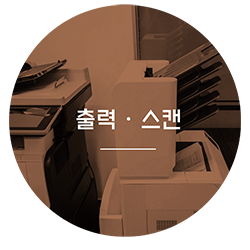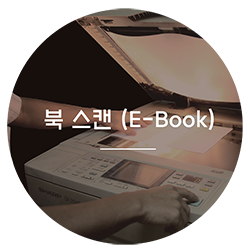Title: Discover Calming Activities for Alzheimer's Patients in Senior …
페이지 정보

본문
Practical Tips for Caregivers
1. Understand dementia: Educate yourself about the different stages of dementia, common symptoms, and how it affects the person's cognitive abilities and behavior.
2. Develop a routine: Establishing a daily routine can help reduce confusion and anxiety for the person with dementia.
3. Practice patience and empathy: Remember that the person with dementia is not intentionally trying to be difficult. Approach situations with compassion and understanding.
4. Take care of yourself: Remember to prioritize your own well-being. Practice self-care, seek support, and take breaks when needed.
5. Stay organized: Keep important documents, medications, and caregiving supplies in a designated area to make caregiving tasks more efficient.
3. Music Therapy:
Music has a powerful impact on memory and can evoke strong emotions and memories in seniors. Listening to music, playing musical instruments, or participating in music therapy sessions can stimulate memory function, reduce stress, and improve overall cognitive function. Caregivers can create personalized playlists of familiar songs for seniors or organize music therapy sessions led by trained professionals to enhance memory and emotional well-being.
Example: A memory care facility organizes weekly puzzle-solving sessions where residents work together to complete challenging puzzles. This not only stimulates their memory function but also fosters teamwork and camaraderie among residents.
Real-World Examples
1. Memory Cafes: Many communities offer memory cafes, which are social gatherings where caregivers and individuals with dementia can connect, share experiences, and participate in engaging activities.
2. Virtual Workshops: In light of the pandemic, many caregiver workshops have transitioned to virtual formats, allowing caregivers to access support and resources from the comfort of their own homes.
3. Support Groups: Joining a caregiver support group can provide a sense of community, practical advice, and emotional support from others who are going through similar experiences.
Introduction:
As we age, it's natural for memory function to decline. However, there are activities and strategies that can help seniors maintain and even improve their memory function. Engaging in memory-stimulating activities not only keeps the brain sharp but also enhances overall cognitive function and quality of life for seniors. In this article, we will explore various activities that can stimulate memory function in senior care settings, along with practical tips and real-world examples to help caregivers and seniors incorporate these activities into their daily routines.
Real-world example: A therapy dog program was introduced in a senior care facility for Alzheimer's patients, allowing residents to interact with friendly dogs during scheduled visits. The presence of the therapy dogs brought joy, comfort, and a sense of companionship to the residents, promoting emotional well-being and social engagement.
The Benefits of Memory Care Facility Activities:
Engaging seniors in meaningful and stimulating activities offers a wide range of benefits, both physical and emotional. Regular participation in activities can help improve cognitive function, enhance social connections, reduce anxiety and depression, and promote a sense of purpose and fulfillment. Furthermore, activities that are specifically designed for individuals with cognitive impairment can help stimulate memory, enhance communication skills, and improve overall mood and behavior.
As we age, maintaining cognitive function becomes increasingly important for overall well-being and Affordable Assisted Living Eastport quality of life. One effective way to support cognitive health in seniors is through memory-focused physical activity programs. These programs combine physical exercise with cognitive activities specifically designed to stimulate memory, attention, and problem-solving skills.
Practical Tips for Planning and Implementing Activities:
1. Individualized Approach: Get to know each resident's interests, hobbies, and preferences to tailor activities to their specific needs and abilities.
2. Variety and Flexibility: Offer a diverse range of activities to cater to different interests and abilities, including arts and crafts, music therapy, reminiscence sessions, and physical exercise.
3. Sensory Stimulation: Incorporate sensory elements such as texture, color, and sound to engage residents on a multisensory level.
4. Familiarity and Routine: Establish a consistent schedule of activities to provide a sense of structure and predictability for residents.
5. Staff Training: Ensure that staff members are trained in therapeutic approaches and techniques for engaging residents in activities effectively.
Real-World Examples of Effective Programs:
1. Memory Lane Cafe: A memory care facility in Ohio hosts a weekly "Memory Lane Cafe" where residents can enjoy themed activities, music, and refreshments in a cozy, familiar setting.
2. Art Therapy Workshops: A memory care facility in California offers art therapy workshops for residents to express themselves creatively and engage in meaningful social interactions.
3. Virtual Reality Experiences: Some memory care facilities are incorporating virtual reality technology to provide residents with immersive experiences that stimulate memory and cognitive function.
1. Understand dementia: Educate yourself about the different stages of dementia, common symptoms, and how it affects the person's cognitive abilities and behavior.
2. Develop a routine: Establishing a daily routine can help reduce confusion and anxiety for the person with dementia.
3. Practice patience and empathy: Remember that the person with dementia is not intentionally trying to be difficult. Approach situations with compassion and understanding.
4. Take care of yourself: Remember to prioritize your own well-being. Practice self-care, seek support, and take breaks when needed.
5. Stay organized: Keep important documents, medications, and caregiving supplies in a designated area to make caregiving tasks more efficient.
3. Music Therapy:
Music has a powerful impact on memory and can evoke strong emotions and memories in seniors. Listening to music, playing musical instruments, or participating in music therapy sessions can stimulate memory function, reduce stress, and improve overall cognitive function. Caregivers can create personalized playlists of familiar songs for seniors or organize music therapy sessions led by trained professionals to enhance memory and emotional well-being.
Example: A memory care facility organizes weekly puzzle-solving sessions where residents work together to complete challenging puzzles. This not only stimulates their memory function but also fosters teamwork and camaraderie among residents.
Real-World Examples
1. Memory Cafes: Many communities offer memory cafes, which are social gatherings where caregivers and individuals with dementia can connect, share experiences, and participate in engaging activities.
2. Virtual Workshops: In light of the pandemic, many caregiver workshops have transitioned to virtual formats, allowing caregivers to access support and resources from the comfort of their own homes.
3. Support Groups: Joining a caregiver support group can provide a sense of community, practical advice, and emotional support from others who are going through similar experiences.
Introduction:
As we age, it's natural for memory function to decline. However, there are activities and strategies that can help seniors maintain and even improve their memory function. Engaging in memory-stimulating activities not only keeps the brain sharp but also enhances overall cognitive function and quality of life for seniors. In this article, we will explore various activities that can stimulate memory function in senior care settings, along with practical tips and real-world examples to help caregivers and seniors incorporate these activities into their daily routines.
Real-world example: A therapy dog program was introduced in a senior care facility for Alzheimer's patients, allowing residents to interact with friendly dogs during scheduled visits. The presence of the therapy dogs brought joy, comfort, and a sense of companionship to the residents, promoting emotional well-being and social engagement.
The Benefits of Memory Care Facility Activities:
Engaging seniors in meaningful and stimulating activities offers a wide range of benefits, both physical and emotional. Regular participation in activities can help improve cognitive function, enhance social connections, reduce anxiety and depression, and promote a sense of purpose and fulfillment. Furthermore, activities that are specifically designed for individuals with cognitive impairment can help stimulate memory, enhance communication skills, and improve overall mood and behavior.
As we age, maintaining cognitive function becomes increasingly important for overall well-being and Affordable Assisted Living Eastport quality of life. One effective way to support cognitive health in seniors is through memory-focused physical activity programs. These programs combine physical exercise with cognitive activities specifically designed to stimulate memory, attention, and problem-solving skills.
Practical Tips for Planning and Implementing Activities:
1. Individualized Approach: Get to know each resident's interests, hobbies, and preferences to tailor activities to their specific needs and abilities.
2. Variety and Flexibility: Offer a diverse range of activities to cater to different interests and abilities, including arts and crafts, music therapy, reminiscence sessions, and physical exercise.
3. Sensory Stimulation: Incorporate sensory elements such as texture, color, and sound to engage residents on a multisensory level.
4. Familiarity and Routine: Establish a consistent schedule of activities to provide a sense of structure and predictability for residents.
5. Staff Training: Ensure that staff members are trained in therapeutic approaches and techniques for engaging residents in activities effectively.
Real-World Examples of Effective Programs:
1. Memory Lane Cafe: A memory care facility in Ohio hosts a weekly "Memory Lane Cafe" where residents can enjoy themed activities, music, and refreshments in a cozy, familiar setting.
2. Art Therapy Workshops: A memory care facility in California offers art therapy workshops for residents to express themselves creatively and engage in meaningful social interactions.
3. Virtual Reality Experiences: Some memory care facilities are incorporating virtual reality technology to provide residents with immersive experiences that stimulate memory and cognitive function.
- 이전글Make the most Out Of Real Estate 24.11.26
- 다음글сео продвижение сайтов заказать цена 24.11.26
댓글목록
등록된 댓글이 없습니다.









